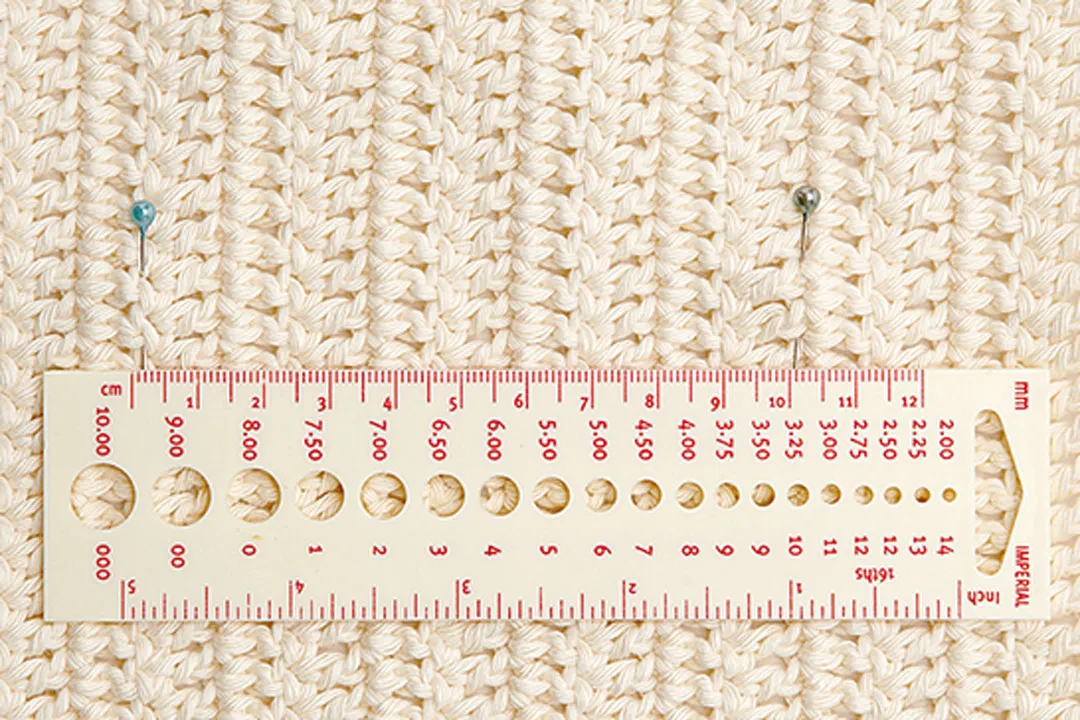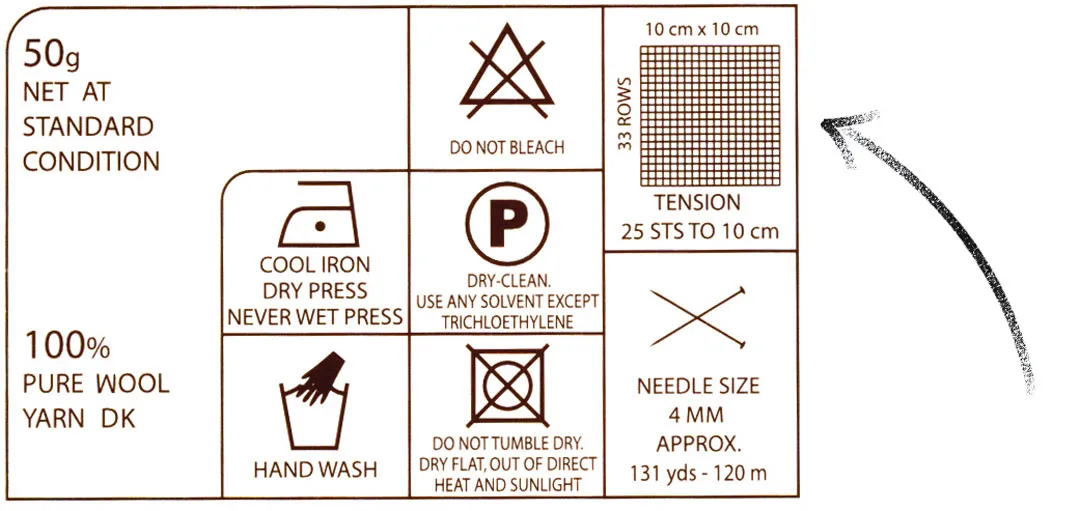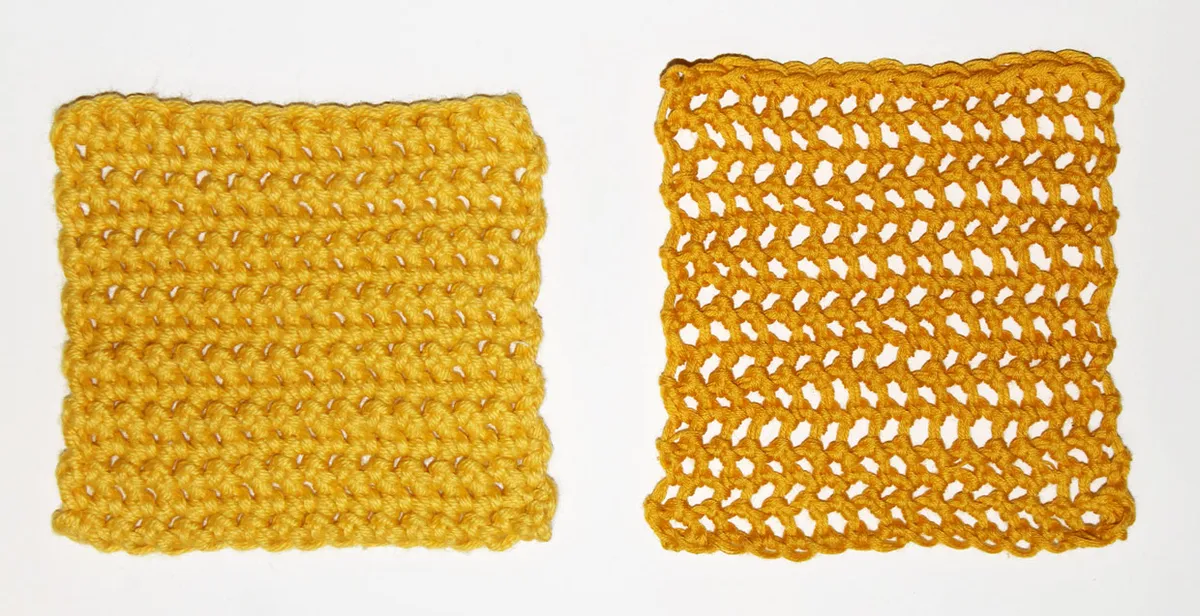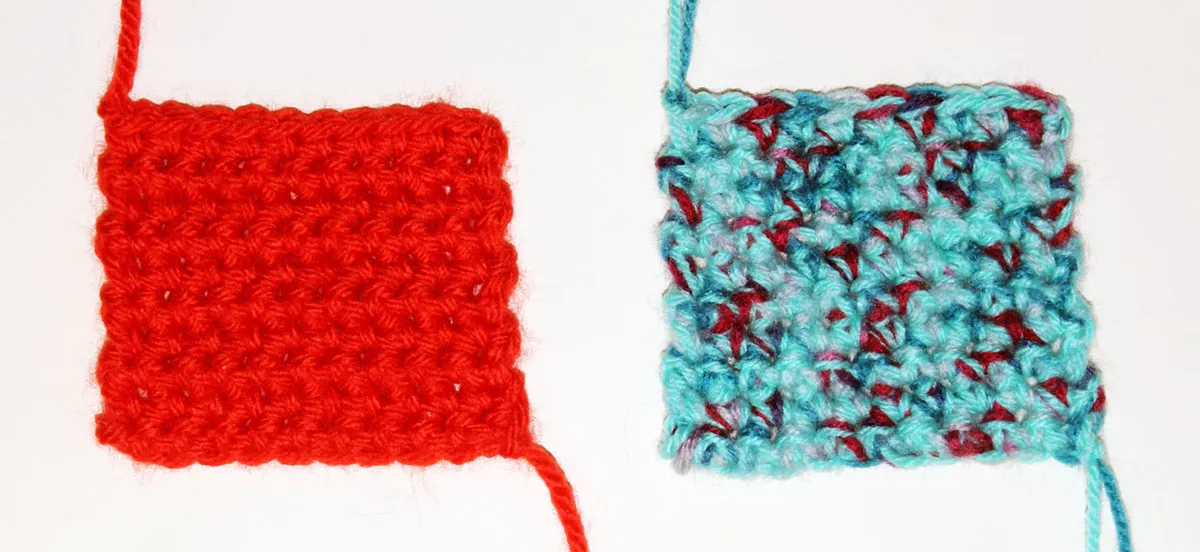Yarn substitution is how we refer to using a yarn that is different to the yarn specified in a pattern. There are many reasons why you might want to use a different yarn for your crochet or knitting project, for example, maybe the suggested yarn is out of stock or is a bit out of your price range, or you already have a yarn that you think would be perfect for a project. But before you just switch yarns, there's a few things you should be aware of when looking for a yarn substitute!
First things first - check your tension!
Before you start on any project - even if you're using the recommended yarn - it's vital to check your tension! One of the main reasons for this is to check that your stitches are being made at the same size as the designers. This may seem a chore, but it's incredibly important - being half a centimetre off on a couple of rows might not seem a big deal, but if you're making a garment this could have huge implications for the final size and fit of the garment! This is also especially important for if you're making a yarn substitution. You may think that if the pattern is using a dk weight yarn, then as long as you're using a similar dk weight yarn then it should all work out fine, but you still need to check that tension. Although yarn weights offer a pretty good gauge for an average thickness of your yarn, two different types can still have big differences. Factors like fibre type and how the yarn was spun can make a big difference in your crochet or knitting, in fact even the colour of your yarn can be important - certain dyes and dying processes can have different effects on a yarn, for example a darker colour will require more dye than a lighter colour, which can affect the fibres leading to some darker yarns being ever so slightly thinner.
Checking your tension is pretty easy though, you can find out how in our guide on how to perfect your crochet tension or how to make knitting tension squares

Choosing a yarn substitute
So you've decided that you definitely want to use a different yarn, but where to start? Well, if you're looking to buy a substitute yarn, it's worth considering a few factors. As suggested above you'll want to try and stick to the general yarn weight suggested - that was even if it's not precisely the same thickness you will at least be able to compensate by adjusting your hook or needle size. One thing to also consider is your fibre choice - for example, if you switch an alpaca yarn for a cotton yarn you're going to produce a final fabric with very different qualities. So as a rule you should try and keep the fibre content similar to what is suggested, or perhaps try a blend yarn which can often be more affordable. You can find out more about fibre types and their qualities in our guide to choosing yarn weights.
You should also take a look at the recommended yarn gauge - this is a general guide that will appear on most yarn ball bands or websites that you order from, and indicates how a yarn will measure up when worked. So in the example below, making 33 rows of 25 stitches with the recommended needle size will create a 10x10cm square for this particular yarn. If this is a similar gauge to the yarn you wish to substitute with, then you're onto a good substitution. However, don't always take this as gospel - this is just an average and you'll still have to check your own tension. It's also worth noting that most types of yarn gauge are written with knitting in mind, so the results of trying to create a swatch with this information may have different results.

Also consider the amount of yarn you will need for your project - the last thing you want to do is run out of yarn half way through! For example, lets say your pattern tells you that you need a 200m ball of dk yarn, but you're switching it for a different dk yarn that comes in 50g balls - so 200/50 means you're going to need 4 balls of that 50g yarn! That may seem obvious, but gets a bit trickier if the numbers aren't so round, for example, replacing a 420m yarn with a 130m yarn - you're going to need to divide 420/130 = 3.23, so you'll actually need to get 4 balls of 13om yarn. Remember that it's always better round up than round down, you may think you can get away with just using 3 balls but you'll be cursing when you run out of yarn on the last 2 rows!
One of our favourite ways of selecting a yarn substitute is using the website Yarnsub. This is a very clever website where you can put in a type of yarn, and it will suggest similar alternatives based on a multitude of factors including texture, gauge, yarn weight, length, fibre and even yarn quantities - basically they've done the thinking for you!

Substituting different weight yarns.
Although sticking with the recommended yarn weight is always advisable, it is possible to use different weights - but it will require some trial and error and will depend on the type of project you're making. For example, if you were to try using an Aran weight yarn instead of a dk weight yarn, this is possible, but you will have to reduce your hook/needle size to get your tension correct, which in turn will lead to your stitches being closer and more packed together, resulting in a thicker, stiffer and more dense fabric - which may be fine for a project like a bag, but maybe not for a garment. The same principles also apply if you try switching a thicker yarn for a thinner yarn, you can in theory use a dk yarn and a larger hook where an Aran yarn is recommended, but your stitches will be looser and your fabric will be a lot more open and flexible.
You can only push this so far though, if you try using a super-chunky yarn instead of a 4ply yarn... realistically it's just not going to work.

Doubling up yarns
One technique that is often overlooked is using more than one yarn at the same time to create a thicker strand. This isn't an exact science, and as you'll have learnt by now - always check your tension! This however can have many benefits. Firstly, lets say you need to use a chunky yarn but you already have loads of dk yarn in your stash - well doubling up that dk yarn may just be the perfect size for your project. Secondly, you can create some interesting colour effects. For example, if you tried combining a plain coloured dk yarn with a variegated 4ply yarn it's possible that you might be able to make that work for a project that recommends Aran yarn, as well as getting some subtle funky colour details. It's certainly one of the more creative ways of how to substitute yarn, but it can be surprisingly fun, and works particularly well for using with those sparkly metallic threads and yarns that are a bit too fine to crochet with alone. We've also got a top tip for this technique too - if you're using two balls of yarn at once, try putting them each in a separate bowl or container - this will stop them rolling all over the place and getting tangled in a big knot!

